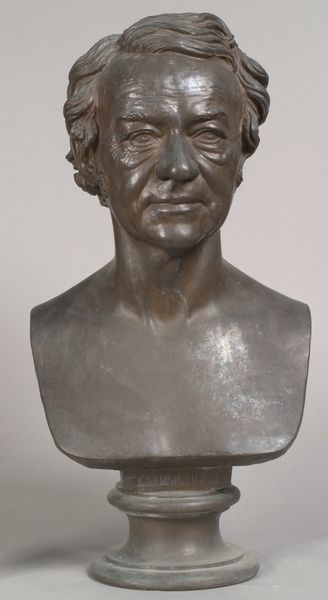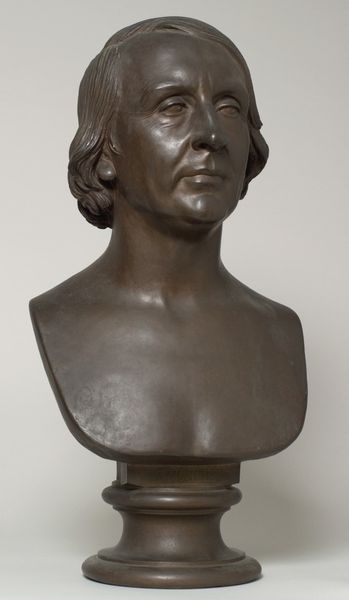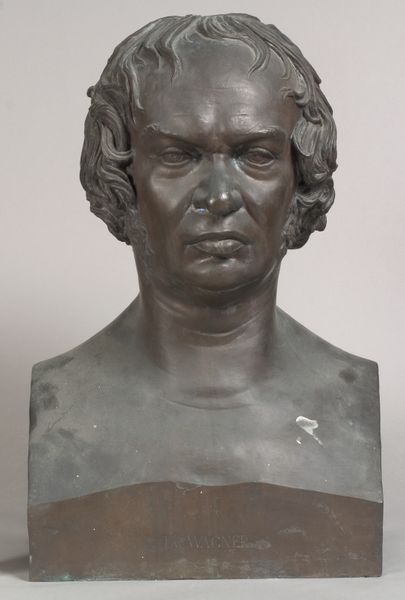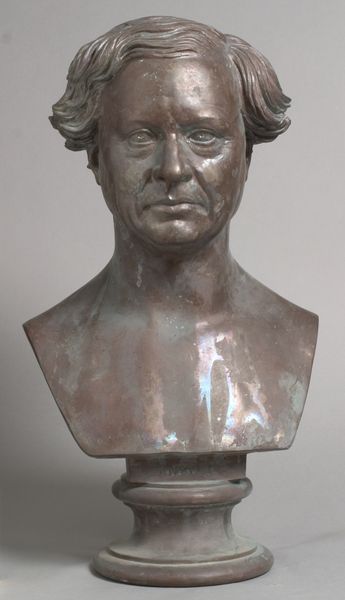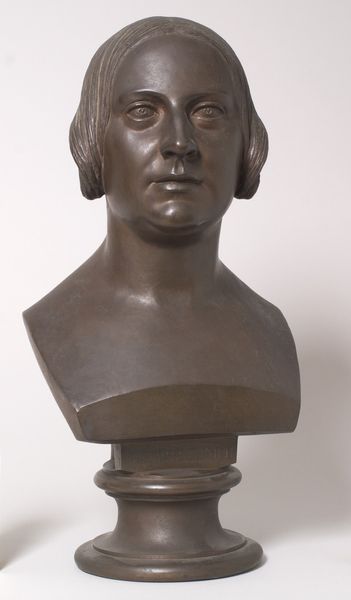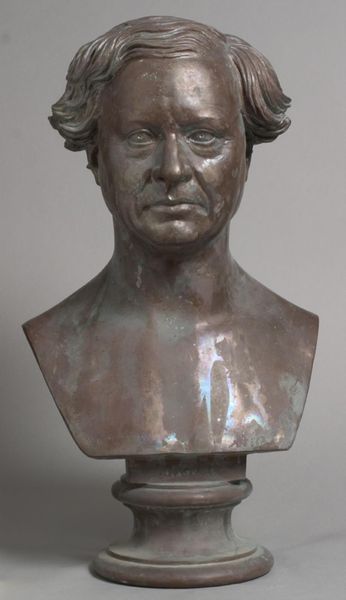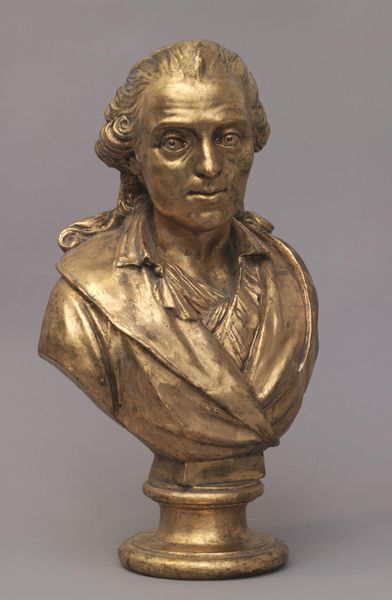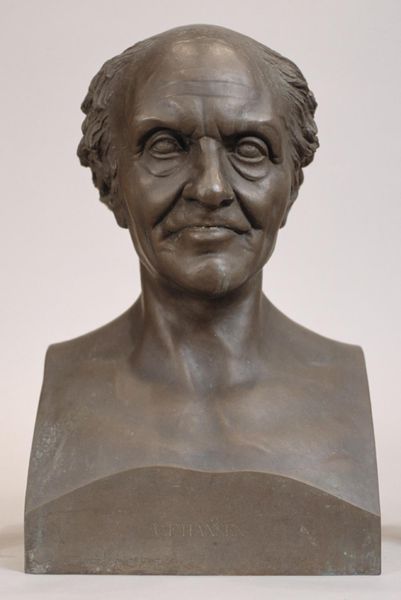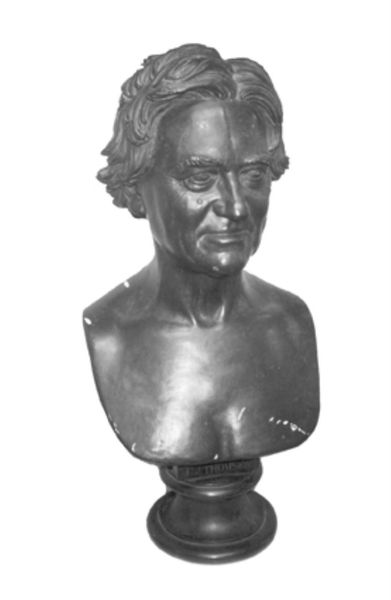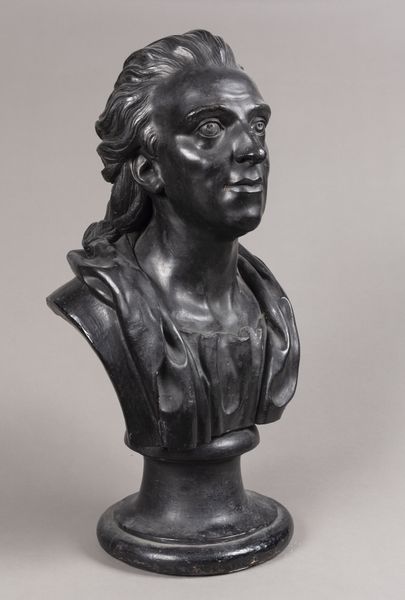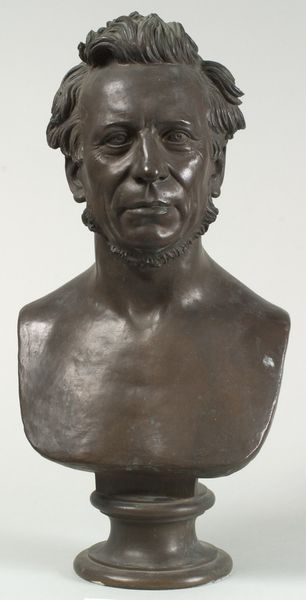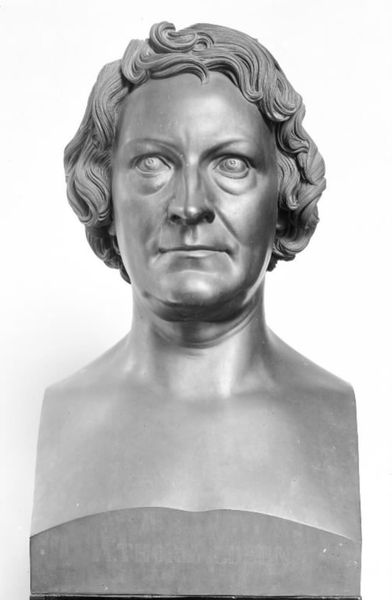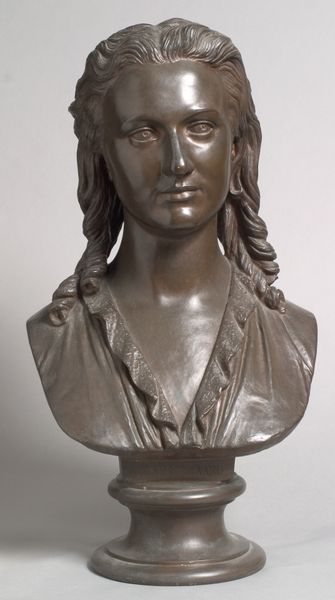
bronze, sculpture
#
portrait
#
neoclacissism
#
sculpture
#
bronze
#
sculpture
#
realism
Dimensions: 49 cm (height) (Netto)
Curator: Looking at it now, I immediately notice the sobriety, the somber gravity of the subject... there is something slightly melancholic. Editor: We're looking at H.W. Bissen's bronze sculpture of Bishop Rasmus Møller, completed in 1841. It’s a striking piece currently held at the SMK, Statens Museum for Kunst. Its creation underscores the fascinating dynamic between art, institutional power, and religious figures during that era. Curator: Bissen captures something quite vulnerable behind the stoic pose, despite the solidity of the bronze. He almost looks like an ancient Roman philosopher rendered with such close, observed realism. I find that dichotomy compelling. Editor: Right, because Neoclassicism, which certainly influences this portrait bust, often idealizes. And religious figures, even more so! But Møller's individual humanity still pierces through. It makes me wonder about the church's place and purpose at this moment in Danish history, and Møller’s personal relationship with his public image. The Realism definitely serves some form of self actualization. Curator: And what did it signify to depict a religious figure with such unveiled humanity at that particular moment? Bissen offers the man, his essence rather than a purely symbolic representation. The deep lines etched around his eyes suggest lived experiences that no purely neoclassical sculpture could contain. Editor: That is exactly right! How revolutionary that such an individualized depiction was chosen as an enduring representation for posterity. Møller's story then must’ve intersected significantly with societal currents. Did his presence somehow challenge existing ecclesiastical structures? Or was it co-opted by that institution? It opens questions about the power dynamics between the individual and institutions then. Curator: For me, beyond any historical narrative, it holds its power in the ability to elicit such empathy, drawing us into quiet contemplation. It suggests perhaps his impact came through being authentically himself, not only a symbolic authority. Editor: Exactly. Ultimately, "Biskop Rasmus Møller" offers more than just a portrait; it offers a mirror reflecting our own changing expectations and the historical tension between institutional authority and raw human presence. It holds so many rich questions. Curator: Agreed, it is truly thought-provoking!
Comments
No comments
Be the first to comment and join the conversation on the ultimate creative platform.
